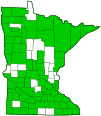tall beggarticks
(Bidens vulgata)
Conservation • Wetland • Description • Habitat • Ecology • Use • Distribution • Taxonomy
Description |
||
Tall beggarticks is a common, widespread, native but often weedy wildflower. It is native to Europe and North America. It occurs across the United States but is most common in New England, the upper Midwest, and the Pacific Northwest. It is common in Minnesota. It grows in loamy or silty soil, under full sun to partial shade, in wet to moderately moist sites. It is found on the banks of rivers and streams; on the margins of lakes and ponds; in wet forests and meadows; and in ditches, railroads, roadsides, and other open disturbed sites. It is weedy in moist disturbed sites. Tall beggarticks is a robust annual forb that rises on a single stem from a shallow, much branched root system. It is usually 12″ to 20″ tall but in favorable conditions it can reach 60″ or more in height. The stem is erect or curved up at the base (ascending), four angled, and occasionally branched. It is slightly to moderately covered with minute, fine, short hairs, especially toward the top, and may be hairless toward the base. It often also has sparse, long, cobwebby hairs mostly at the nodes. The leaves are opposite, broadly triangular to egg-shaped in outline, 2″ to 6″ (5 to 15 cm) long, 1¼″ to 4¾″ (3 to 12 cm) wide, and pinnately divided into 3 or 5 leaflets. They are on ⅜″ to 2″ long leaf stalks. Rarely the uppermost leaves are undivided. The leaflets are lance-shaped or narrowly egg-shaped, ¾″ to 4¾″ (20 to 120 mm) long, and, ⅜″ to 1 9 ⁄16″ (10 to 40 mm) wide. Each leaflet is on a well-developed stalk (petiolule) that is sometimes narrowly winged. The leaflet blades are wedge-shaped or tapered at the base and taper to a sharp point at the tip. The upper surface is hairless. The lower surface may be hairless or sparsely to moderately covered with minute, fine hairs. The margins are finely to coarsely toothed with sharp, forward or outward pointing teeth, and sometimes have a fringe of minute hairs. The inflorescence may be a single flower head or a loose and open or small and branched cluster (panicle) of 2 to several flower heads at the end of the stem and each branch. Each flower head is on a 1½″ to 6″ (40 to 150 mm) long stalk (peduncle). At the base of each flower head there is a whorl (involucre) of modified leaves (bracts). The involucral bracts are in two series: an outer series of usually 10 to 16, sometimes as many as 21 large, leaf-like bracts; and an inner series of 8 to 14 much smaller bracts. The bracts in the outer series are ascending to nearly horizontal (spreading); narrow; widened beyond the middle (inversely egg-shaped) or straight-sided (linear); and usually ⅜″ to ¾″(10 to 20 mm) long, sometimes up to 1 9 ⁄16″ (40 mm) long. The lower (outer) surface is sparsely to moderately covered with minute, stiff hairs, especially toward the base. The margins are untoothed and have a fringe of short spreading hairs, at least near the base. The bracts in the inner series are strongly ascending, 3 ⁄16″ to ⅜″ (5 to 9 mm) long, oblong to narrowly egg-shaped or egg-shaped, and hairless. They are yellow, often greenish in the in the middle, always with brown tips. There may be no ray florets or 1 to 5 inconspicuous ray florets. When present, the ray florets are yellow and 1 ⁄16″ to ⅛″ (2 to 4 mm) long. There can be 40 to 150 disk florets though there are seldom more than 100. The disk florets are 1 ⁄16″ to ⅛″ (2.5 to 4 mm) long and yellow. They are tube-like with 5 spreading to ascending lobes at the tip. The fruit is a dry, more or less flattened, inversely egg-shaped to wedge-shaped seed capsule (cypsela). It may be purplish, brown, olive-colored, or straw-colored. The margin is barbed near the tip and sometimes more or less winged near the base. The persistent floret parts (pappus) remain as 2 stiff, barbed, ⅛″ to ¼″ (3 to 7 mm) long, bristle-like appendages (awns) that are erect and either together or farther apart at their tops than at their bases. |
||
Height |
||
12″ to 60″ |
||
Flower Color |
||
Yellow |
||
Similar Species |
||
Devil’s beggarticks (Bidens frondosa) tends to be less robust. The flower heads have just 5 to 8 outer involucral bracts. The disk florets are orange. Tall beggarticks and devil’s beggarticks are very similar in appearance. One of the ways they are distinguished in dichotomous keys and technical descriptions is the color of the disk florets. Tall beggarticks is said to have yellow florets, while devil’s beggarticks is said to have orange florets. In the field and in photos the difference is not always that clear. The disk florets of tall beggarticks are best described as yellow or orangish-yellow, while those of devil’s beggarticks are orange or yellowish-orange. |
||
Habitat |
||
Wet to moderately moist. Banks of rivers and streams, margins of lakes and ponds, forests, meadows, ditches, railroads, roadsides, and open disturbed sites. Full sun to light shade. |
||
Ecology |
||
Flowering |
||
August to October |
||
Pests and Diseases |
||
|
||
Use |
||
|
||
Distribution |
||||
|
Sources |
|||
| 5/19/2023 | ||||
Nativity |
||||
Native |
||||
Occurrence |
||||
Common |
||||
Taxonomy |
|||
| Kingdom | Plantae (Plants) | ||
| Subkingdom | Pteridobiotina | ||
| Phylum | Tracheophyta (Vascular Plants) | ||
| Class | Magnoliopsida (Dicots) | ||
Order |
Asterales (Sunflowers, Bellflowers, Fanflowers, and Allies) | ||
Family |
Asteraceae (Sunflowers, Daisies, Asters, and Allies) | ||
| Subfamily | Asteroideae | ||
| Tribe | Coreopsideae (coreopsis and allies) | ||
| Genus | Bidens (beggarticks) | ||
Subordinate Taxa |
|||
|
|||
Synonyms |
|||
Bidens frondosa var. puberula Bidens puberula Bidens vulgata var. puberula Bidens vulgata var. schizantha |
|||
Common Names |
|||
big devil’s beggartick big devil’s beggarticks tall beggar-ticks tall beggarticks western sticktight |
|||
Glossary
Ascending
Growing upward at an angle or curving upward from the base.
Awn
A stiff, bristle-like appendage at the tip of the glume, lemma, or palea of grass florets.
Cypsela
A dry, one-chambered, single-seeded seed capsule, formed from a single carpel, with the seed attached to the membranous outer layer (wall) only by the seed stalk; the wall, formed from the wall of the inferior ovary and also from other tissues derived from the receptacle or hypanthium, does not split open at maturity, but relies on decay or predation to release the contents.
Floret
An individual flower in a dense cluster of flowers; or a modified flower in the flower head in the Asteraceae family and some other families. In grasses, the modified flower in a spikelet of Poaceae and some Cyperaceae with its lemma and palea.
Involucre
A whorl of bracts beneath or surrounding a flower, flower head, or flower cluster.
Linear
Long, straight, and narrow, with more or less parallel sides, like a blade of grass.
Node
The small swelling of the stem from which one or more leaves, branches, or buds originate.
Panicle
A pyramidal inflorescence with a main stem and branches. Flowers on the lower, longer branches mature earlier than those on the shorter, upper ones.
Pappus
The modified calyx composed of awns, scales, bristles, or feather-like hairs in plants of the Asteraceae family.
Peduncle
In angiosperms, the stalk of a single flower or a flower cluster; in club mosses, the stalk of a strobilus or a group of strobili.
Petiole
On plants: The stalk of a leaf blade or a compound leaf that attaches it to the stem. On ants and wasps: The constricted first one or two segments of the rear part of the body.
Petiolule
The stalk of a leaflet blade on a compound leaf.
Pinnate
On a compound leaf, having the leaflets arranged on opposite sides of a common stalk. On a bryophyte, having branches evenly arranged on opposite sides of a stem.
Spreading
Extending nearly horizontal.
Winged leaf stalk
A leaf stalk with a leaf-like or membrane-like extension along both sides.
Visitor Photos |
|||||
Share your photo of this plant. |
|||||
| This button not working for you? Simply email us at info@MinnesotaSeasons.com. Attach one or more photos and, if you like, a caption. |
|||||
|
|||||
MinnesotaSeasons.com Photos |
|||||
Plant |
|||||
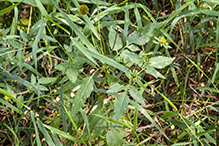 |
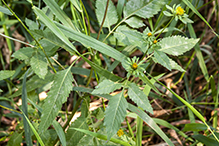 |
||||
Flower Head |
|||||
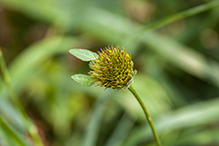 |
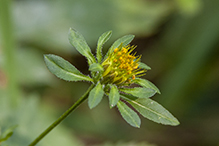 |
||||
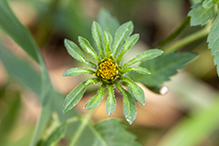 |
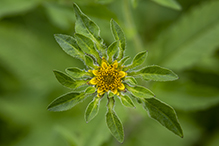 |
||||
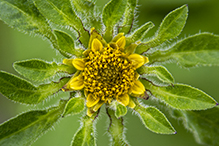 |
|||||
Leaf |
|||||
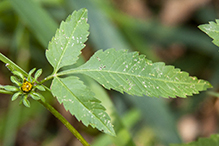 |
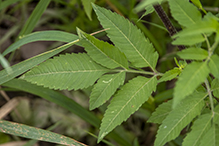 |
||||

Slideshows |
||

Visitor Videos |
|||
Share your video of this plant. |
|||
| This button not working for you? Simply email us at info@MinnesotaSeasons.com. Attach a video, a YouTube link, or a cloud storage link. |
|||
Other Videos |
|||

Visitor Sightings |
|||||
Report a sighting of this plant. |
|||||
| This button not working for you? Simply email us at info@MinnesotaSeasons.com. Be sure to include a location. |
|||||
|
|||||
MinnesotaSeasons.com Sightings |
|||||

Created: 12/30/2019
Last Updated:
